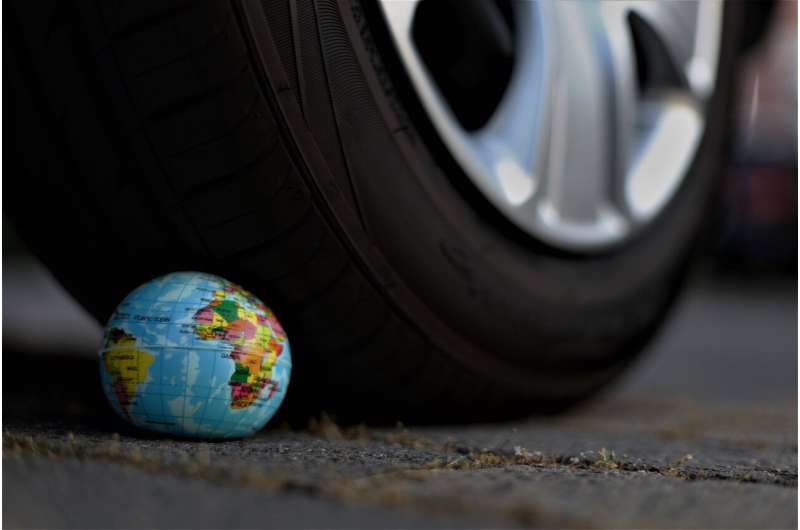
In September, the governing board of Santa Cruz Metro made a big bet on the future of green public transit when it approved the purchase of 57 buses fueled by hydrogen—the largest order of hydrogen-fueled buses made so far in the U.S.
The brand-new vehicles, which could arrive as soon as the end of 2024, have water as their only tailpipe emissions. They will replace most of the authority's aging buses, which run on compressed natural gas.
There's just one problem: Most of the hydrogen that is currently available is produced from fossil fuels, and that causes more of the greenhouse gas emissions that hydrogen buses are supposed to reduce. Only when hydrogen can be made by using electricity generated from clean sources like solar and wind to split water into hydrogen and oxygen will the fuel be truly "green." And that means Santa Cruz Metro is betting on technology that isn't widely available yet.
"I have a total recognition that it is not perfect," said Michael Tree, CEO of Santa Cruz Metro. "We took a little risk."
By 2040, under rules laid down by the California Air Resources Board, transit agencies across the state must convert their entire fleets to buses with zero tailpipe emissions.
But across the Bay Area and the Central Coast, they are planning different routes to get there, with most investing more heavily in battery-electric buses than hydrogen.
San Francisco Muni, for example, currently runs more than 550 diesel-electric hybrid buses, almost 280 electric trolley buses running off overhead cables, and just 10 battery-electric vehicles. It plans to phase out the hybrids and replace them all with battery-electric and electric trolley buses.
But hydrogen buses have no place in Muni's plans. Marin Transit, Sonoma County Transit, and the Napa Valley Transportation Authority are similarly planning to switch to entirely battery-electric fleets.
Other agencies are hedging their bets. The region's other giant, AC Transit, which serves Alameda and Contra Costa counties, has 23 hydrogen buses and only seven battery-electric models. As it phases out its more than 550 diesel buses over the coming years, they will be replaced with a mixed fleet—with more than two hydrogen buses to each battery-powered bus. SamTrans, which serves San Mateo County, is similarly planning for a hydrogen-dominated mixed fleet.
So proportionately, Santa Cruz Metro stands out for going all-in on hydrogen. And by placing a big order for hydrogen buses now, it has made an early commitment to the technology.
"We tend to be very innovative and forward-thinking and be on the forefront. We are bold in our response because we see the immediacy of the problem," said Shebreh Kalantari-Johnson, who chairs the Santa Cruz Metro Board.
According to Jack Brouwer, director of the National Fuel Cell Research Center and the Advanced Power and Energy Program at UC Irvine, deciding the right number and type of zero-emission buses depends on many factors, including the electrical grid infrastructure, the bus routes, and the road type.
Battery electric buses, for example, consume more power on hilly roads. Santa Cruz Metro was concerned about that with its current routes, even though San Francisco Muni saw no problem with battery-electric buses ascending the city's peaks. "Our battery buses have been tested on steep hills and can handle any route that our hybrid buses would be assigned to," Marley Miller, associate engineer with San Francisco Muni, wrote in an email.
2024 MediaNews Group, Inc. Distributed by Tribune Content Agency, LLC.
Citation: With California mandating zero emissions, Bay Area agencies are split on hydrogen vs. electric (2024, February 14) retrieved 14 February 2024 from https://techxplore.com/news/2024-02-california-mandating-emissions-bay-area.html
This document is subject to copyright. Apart from any fair dealing for the purpose of private study or research, no part may be reproduced without the written permission. The content is provided for information purposes only.
